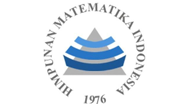The Trinomial Tree Method in Pricing European Gold Option with Volatility Forecasting Using the GARCH (1,1) Model
Abstract
This study enhances the pricing accuracy of European gold options by integrating GARCH (1,1)-based volatility forecast into the trinomial tree method. GARCH (1,1) captures key characteristics of financial return series, such as heteroscedasticity and volatility clustering, while the trinomial tree offers greater flexibility than traditional models by allowing three price movements at each node. This integration provides a more realistic and robust framework for option pricing under dynamic market conditions. Using gold price data from October 2017 to October 2024, the model forecast annualized volatilities of 16.59%, 17.33%, and 17.66% for one, two, and three months. For call options, prices increase with longer maturities, ranging from Rp194,048 to Rp207,385. Conversely, put options become more valuable when the strike price exceeds the market prices, reaching up to Rp107,778. The proposed model offers practical value for more accurate pricing and investment strategies.
Keywords
Full Text:
PDFReferences
J. C. Hull, Risk Management and Financial Institutions, New Jersey: John Wiley & Sons, 2023.
S. Ren and X. Zhang, “Chooser option pricing based on Black-Scholes Model and Monte-Carlo Simuations,” BCP Business & Management, vol. 32, pp. 63-71, 2022, doi: https://doi.org/10.54691/bcpbm.v32i.2870.
R. Robiyanto, B.A. Nugroho, A.D. Huruta, B. Frensidy, and Suyanto, “Identifying the Role of Gold on Sustainable Investment in Indonesia: The DCC-GARCH Approach,” Economies, vol. 9, no. 119, 2021, doi: https://doi.org/10.3390/economies9030119.
S. Kumari, V. S. Nerlekar, and N. Raut, “Gold as a Safe Haven: Analyzing the Investment Patterns of Indian Women,” Journal of Informatics Education and Research, vol. 4, no. 3, pp. 535-540, 2024.
C. A. Ugomma, “An Empirical Study of Stock Price Returns Using Black-Scholes Option Pricing Model,” International Journal for Research in Applied Science & Engineering Technology (IJRASET), vol. 11, pp. 2058-2066, 2023, doi: https://doi.org/10.22214/ijraset.2023.55479.
Y. Miao, “A Binomial Tree-Based Empirical Study on the Biases of American Call Option,” Highlights in Business, Economic and Management, vol. 40, pp. 470-476, 2024, doi: https://doi.org/10.54097/z09bzy93.
H. Ding, “Research on option pricing of Tesla based on Black-Scholes-Merton, Binomial Tree, and Cox-Ingersoll-Ross Models,” Highlights in Business, Economics and Management, vol. 22, pp. 35-40, 2023, doi: https://doi.org/10.54097/mwd4s763.
Y. Meng, “Comparison of Least Square Monte Carlo Algorithm and Binomial Tree Model for Pricing American Options,” in Proc. 2022 4th Int. Conf. on Economic Management and Cultural Industry (ICEMCI 2022), pp. 2019-2028, doi: https://doi.org/10.2991/978-94-6463-098-5_227.
H. Yıldırım and F. V. Bekun, “Predicting volatility of bitcoin returns with ARCH, GARCH, and EGARCH models,” Future Business Journal, vol. 9, no. 1, p. 75, 2023, doi: https://doi.org/10.1186/s43093-023-00255-8.
S. Sulastri, L. Novieyanti, and Sukono, “Penentuan Harga Opsi Barrier Menggunakan Metode Trinomial Kamrad Ritchken Dengan Volatilitas Model GARCH,” Jurnal Ilmu Manajemen dan Bisnis, vol. 10, no. 1, pp. 83-91, 2019, doi: https://doi.org/10.17509/jimb.v10i1.16163.
A. Khera, A. Goyal, and M. P. Yadav, “Capturing the stock market volatility: a study of sectoral indices in India using symmetric GARCH models,” International Journal of Management Practice, vol. 15, no. 6, pp. 820-833, 2022, doi: https://doi.org/10.1504/IJMP.2022.126536.
F. Sekmen and G. A. Ravanoglu, “The modelling of exchange rate volatility using Arch-Garch models: the case of Turkey,” MANAS Soosyal Araştırmalar Dergisi, vol. 9, no. 2, pp. 834-843, 2020, doi: https://doi.org/10.33206/mjss.541309.
R. -C. Mușetescu, G.-E. Grigore, and S. Nicolae, “The use of GARCH autoregressive models in estimating and forecasting the crude oil volatility,” European Journal of Interdisciplinary Studies, vol. 14, no. 1, pp. 13-38, 2022, doi: https://doi.org/10.24818/ejis.2022.02.
S. Sharma, V. Aggarwal, and M. P. Yadav, “Comparison of linear and non-linear GARCH models for forecasting volatility of select emerging countries,” Journal of Advances in Management Research, vol. 18, no. 4, pp. 526-547, 2021, doi: https://doi.org/10.1108/JAMR-07-2020-0152.
C. Spulbar, F. R. Birau, J. Trivedi, I. T. Hawaldar, and E. L. Minea, “Testing volatility spillovers using GARCH models in the Japanese stock market during COVID-19,” Investment Management and Financial Innovations, vol. 19, no. 1, pp. 262–273, 2022, doi: https://doi.org/10.21511/imfi.19(1).2022.20.
I. M. Md Ghani and H. A. Rahim, “Modeling and Forecasting of Volatility using ARMA-GARCH: Case Study on Malaysia Natural Rubber Prices,” in Proc. International Rubber Conference, IOP Conf. Series: Materials Science and Engineering, 2019, doi: https://doi.org/10.1088/1757-899X/548/1/012023.
D. L. Olson and D. Wu, Predictive Data Mining Models, Singapore: Springer Science+Business Media, 2017.
K. K. Langat, J. I. Mwaniki, and G. K. Kiprop, “Pricing Options Using Trinomial Lattice Method,” Journal of Finance and Economics, vol. 7, no. 3, pp. 81–87, 2019, doi: https://doi.org/10.12691/jfe-7-3-1.
A. K. Sinha, “How to Implement a Trinomial Option Pricing Model in MS-Excel?” Journal of Accounting and Finance, vol. 21, no. 5, 2021, doi: https://doi.org/10.33423/jaf.v21i5.4731.
Q. Nissa, N. Satyahadewi, and H. Perdana, “Penentuan Harga Opsi Beli Tipe Eropa Menggunakan Metode Trinomial,” Bimaster: Buletin Ilmiah Matematika, Statistika dan Terapannya, vol. 9, no. 3, 2020, doi: https://doi.org/10.26418/bbimst.v9i4.42742.
D. Josheski and M. Apostolov, “A review of the binomial and trinomial models for option pricing and their convergence to the Black-Scholes model determined option prices,” Econometrics Ekonometria Advances in Applied Data Analysis, vol. 24, no. 2, pp. 53–85, 2020, doi: https://doi.org/10.15611/eada.2020.2.05.
İ. Yurttagüler, “Analysis of BIST Gold Index Volatility With Autoregressive Conditional Heteroscedasticity Models,” İnsan ve Toplum Bilimleri Araştırmaları Dergisi, vol. 13, no. 3, pp. 1256-1276, 2024, doi: https://doi.org/10.15869/itobiad.1390321.
T. Bollerslev. “A conditionally heteroskedastic time series model for speculative prices and rates of return,” The Review of Economics and Statistics, pp. 542-547, 1987.
R. S. Tsay, Analysis of Financial Time Series, 3rd ed., Hoboken, NJ: John Wiley & Sons, 2010.
Z. C. Stiglingh and M. B. Seitshiro, “Quantification of GARCH(1,1) Model Misspecification with Three Known Assumed Error Term Distributions,” Journal of Financial Risk Management, vol. 11, no. 3, pp. 549–578, 2022, doi: https://doi.org/10.4236/jfrm.2022.113026.
B. Williams, GARCH(1,1) Models, Bachelor's thesis, Ruprecht-Karls-Universität Heidelberg, Faculty of Mathematics and Computer Science, July 2011.
D. J. Higham, An Introduction to Financial Option Valuation, Cambridge: Cambridge University Press, 2004.
D. Lilyana, B. Subartini, Riaman, and A. K. Supriatna, “Calculation of call option using trinomial tree method and black-scholes method: Case study of Microsoft Corporation,” Journal of Physics: Conference Series, vol. 1722, no. 1, 2021, doi: https://doi.org/10.1088/1742-6596/1722/1/012064.
Badan Pusat Statistik Indonesia, “BI Rate, 2024.” [Online]. Available: https://www.bps.go.id/id/statistics-table/2/Mzc5IzI%3D/bi-rate.html. [Accessed: Dec. 2, 2024].
DOI: http://dx.doi.org/10.30829/zero.v9i1.25455
Refbacks
- There are currently no refbacks.

This work is licensed under a Creative Commons Attribution-ShareAlike 4.0 International License.
Publisher : Department of Mathematics Faculty of Science and Technology Universitas Islam Negeri Sumatera Utara Medan | |
✉️ Email: zero_journal@uinsu.ac.id 📱 WhatsApp:085270009767 (Admin Official) | |
 |  |  |  |  |



